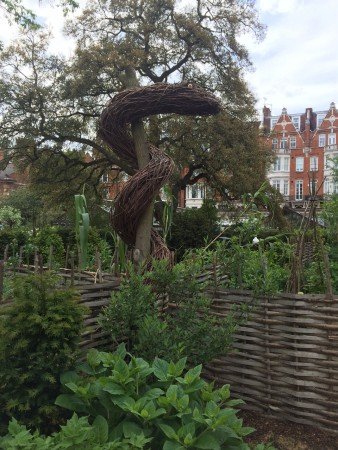The walled Chelsea Physic Garden in London is a peaceful place to spend an afternoon, regardless of your gardening inclinations. While sitting on a bench, soaking up a tiny bit of sunshine and the herby fragrances floating by, one of my seat mates turned to ask if I visited often. “No, this is my first visit – and you?” I asked. “Oh, no! We’re not gardeners, but we come every sunny afternoon – we live just around the corner.”
It’s not surprising that the garden has ardent supporters. Founded by the Worshipful Society of Apothecaries of London, the Physic was established in 1673. In the 1700s, it was the most important centre for plant exchange in the world. In subsequent years, it battled financial difficulties, the threat of land grabs and other crises, but was able to carry on. Like any good botanical garden, it’s well labelled and organized into various plant collections: medicinal, useful, historical, native and the newest area, woodland plants. To give you an idea of the garden’s breadth, there are more than 400 medicinal plants on display and more than 800 plants organized by genus in the Dicotyledon Order beds.
Definitely a satisfying place to stroll and wander about in bustling London.












